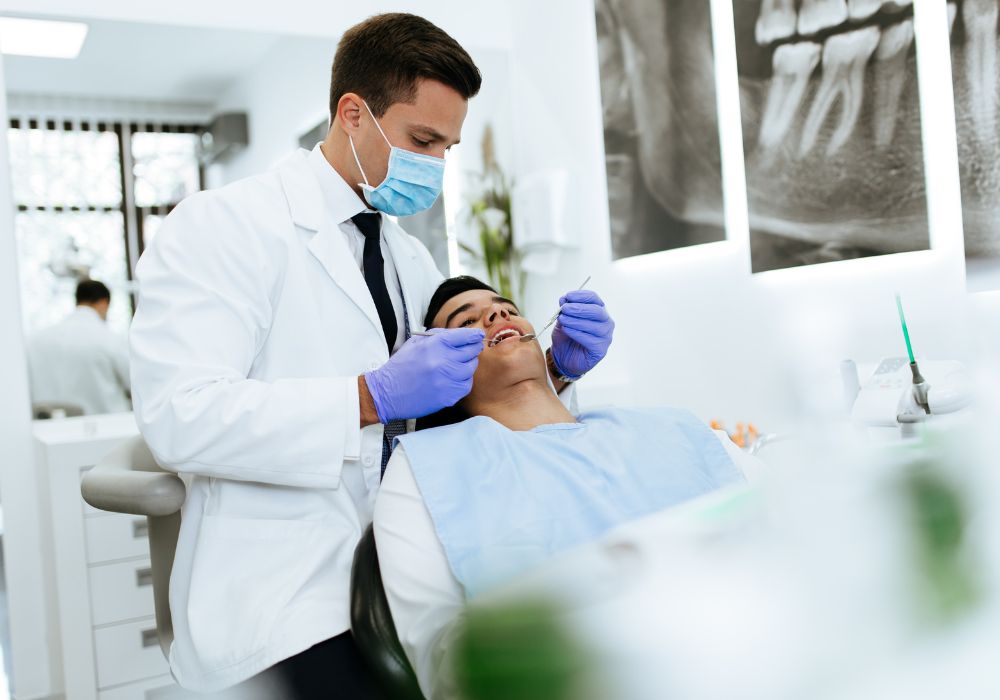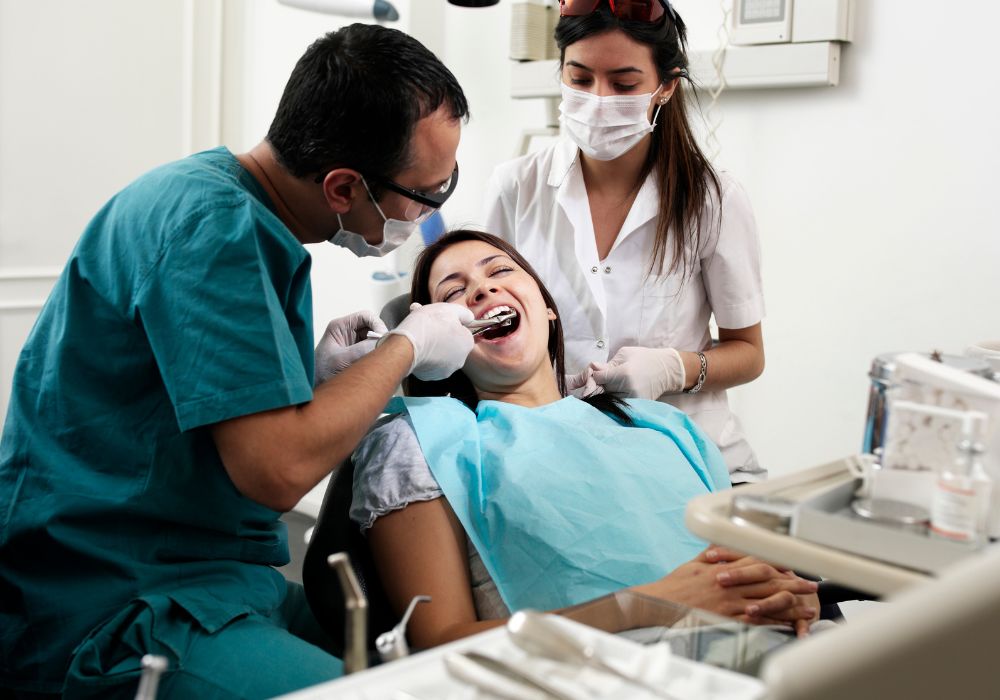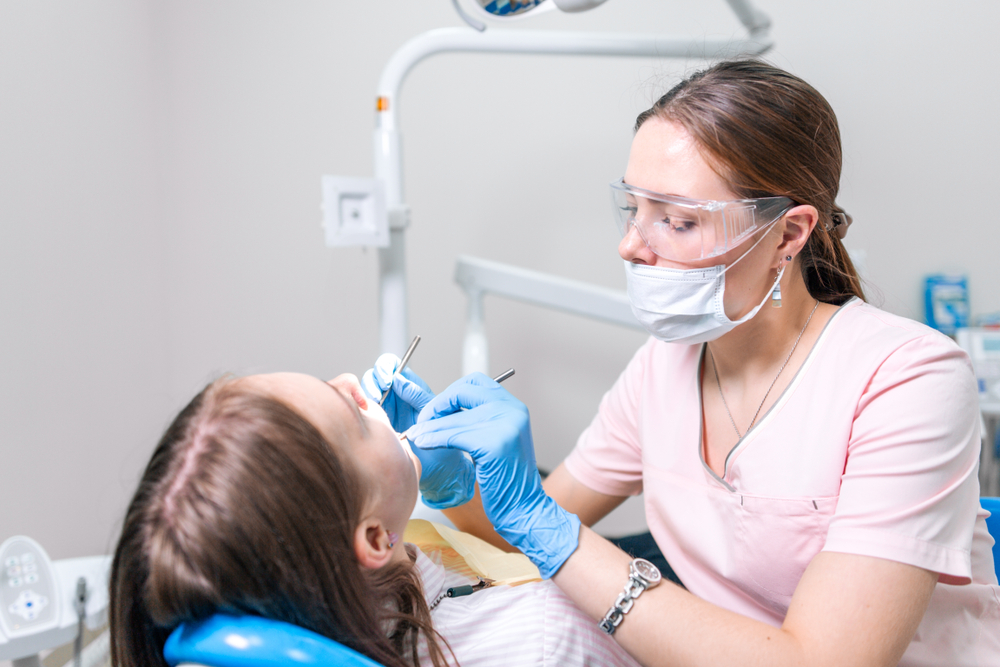Dental health is health, yet not every insurance plan includes dental insurance, especially if it’s a low-cost one. This can be quite frustrating as dental care in the US can be quite pricey sometimes.
So, if you are in need of dental treatment but you don’t have dental insurance coverage, how should you proceed? How much is a dental visit without insurance in the US and is the insurance worth it? Let’s find out below.
How Much is a Dental Visit Without Insurance?
The exact cost of a visit to the dentist without any dental insurance plans will obviously vary depending on what procedures you’re going to need. The maximum you’re going to have to pay out-of-pocket can be in the tens of thousands of dollars in the worst scenarios but that should only be the case if you have a particularly serious problem you need fixed.
More often than not, simple stuff such as routine check-ups, dental X-rays, gums and teeth cleanings of plaque to prevent gum disease, and so on should cost somewhere in the range of $100 to $300 per visit or $200 to $600 per year, assuming that you visit your dentist twice per year as you should for the best possible prevention and care.
What if you need something more than an X-ray or visual exams, however? Those cases can quickly ramp up the overall price of a dentist visit and that’s a big reason why many people are hesitant to go to the dentist when they know they don’t have dental benefits.
This, of course, is a very risky decision to make and it often comes with pricey consequences. Yes, visiting the dentist can reveal costly problems that we often don’t want to deal with when we’re not insured. At the same time, however, not visiting your dentist and letting these problems develop means even bigger and more expensive issues in the near future.
So, even if you don’t have insurance right now, the financial decision likely still is to go to the dentist if you haven’t done so in a while or if you have some concerns – postponing the visit only ramps up future costs to often incomparable degrees and it also poses health risks that go beyond mere monetary concerns.
What Are the Costs of Different Dental Procedures Without Insurance?

So, if we’re talking about something more than a quick check-up and teeth cleaning, what are the potential sums you may be looking to pay?
- Deep dental cleaning – a much more extensive procedure that doesn’t just polish the visible parts of teeth but covers every part, including the roots near the gums to prevent gum disease. As such, deep dental cleaning often costs between $150 to $300 on top of everything else.
- Filling – cavities can cost you somewhere between $100 to $400 per tooth, depending on the size and severity of the problem, on what kind of filling you’re getting, and on the dentist you’ve chosen. For example, a regular resin-based composite filling will usually cost around $200 in the US.
- Tooth extractions – removing a non-wisdom tooth usually costs between $75 and $200 in the US. The main variable to consider here is the type of anesthesia you choose.
- Wisdom teeth removal – wisdom teeth are almost always costlier to remove than other teeth because doing so is harder, usually requires a potent anesthetic, and often needs surgery too. So, you can expect the cost of wisdom teeth removal in the US to be between $120 and $800.
- Crown – the choice between a porcelain crown, ceramic or zirconium crown, one made out of porcelain-fused-to-metal, or just ordinary metal crowns is the chief determining factor here. Such crowns can cost as little as $500 and as much as $3,000.
- Root canals – the exact location of the canal and the severity of the problem can lead to a big price fluctuation but, overall, filling a root canal can cost between $300 and $2,000. The type of filling matters too – some are as simple as using resin-based composite, similar to a cavity filling while others require a crown to be put on top of the filling.
- Veneers – there is a lot of variation here too with many thin veneers costing more than the thicker ones. A thick porcelain veneer tends to cost somewhere around $500 and $1,100 whereas a thinner veneer may be around $700 to $1,300 per tooth.
- Dentures – the cost of traditional dentures in the US is usually between $1,000 and $3,000, depending on the materials used and the overall quality of the dentures. Partial dentures are typically more affordable but not by a lot – their prices typically range between $1,400 and $1,800 based on the same factors as well as the exact size and position in the mouth.
- Bridges – a dental bridge in the US can cost anywhere between $500 and $5,000 or even more, depending on its type and materials. A simple one-tooth fixed bridge made of metal will typically be just a few hundred dollars whereas a bonded ceramic two-teeth bridge mounted on implants can be well into the higher thousands.
- Implants – the cost of an individual tooth implant in the US is often cited to be between $1,500 and $2,000. This is a bit deceptive, however, as that’s just the cost of the implant itself, not the procedure as a whole. When you add the work on the abutment tooth, the crown, and all other related procedures, the total costs typically jump up to somewhere between $3,100 and $5,800.
Does Going to the Dentist Without Insurance Cost More?

A very frustrating paradox of going to the dentist without insurance is that you’re not only going to have to pay the full price of the service but that price is going to be higher than usual too.
That’s because insurance companies are often able to negotiate lower rates for the dentist’s services whereas individual clients don’t have that negotiating power. That’s why the rates for dental work can be so devastating when you’re not ensured.
What can you do to lower the costs of a dentist visit whether or not you have insurance?
Given everything we mentioned above, getting a good dental insurance definitely seems like a good idea for most people, especially if you know or suspect that your teeth aren’t in the best condition they can be in and might need work done in the near future.
By most estimates, American spend an average of $360 on dental insurance premiums per year which is more or less the expected cost of one relatively uneventful trip to the dentist anyway. Given that such insurances usually cover about 50% of the cost, lowers the total cost, and that you’re expected to make two such trips to the dentist a year, it turns out dental insurance pays for itself even if you don’t need much work done on your teeth.
If you don’t have insurance right now, however, and you really need to go to the dentist, what can you do to minimize the hit on your wallet?
For starters, having Medicaid is great for dental needs in some states. Most states provide emergency dental services for people on Medicaid at the very least while some also offer more comprehensive and preventative dental care.
Using CareCredit® can be an easy way to cover your immediate dental expenses if you don’t have cash on hand and the vast majority of dentists accept it as a viable payment option if you don’t have insurance. CareCredit® is essentially similar to a credit card but for health and wellness expenses only.
Most states will also have quite a few free dental clinics and non-profit dental offices that offer dental cleanings and other services to help with your oral health. Such services often won’t be able to cover the more major procedures, however, but they are a good option for proactive and preventative check-ups – certainly infinitely better than just not going to a dentist at all.
Getting a small loan from a friend or family member is also a perfectly viable and wise option if you’re low on cash but haven’t been to the dentist in a while. Expenses on preventative care may be frustrating but they are also one of the smartest things to spend money on as they save a ton of major future expenses.
In Conclusion
We all know that we should floss every time we’re brushing, that we should consider using tools such as dental water jets, and more. Similarly, we all know that going to biannual dental check-ups is a smart idea whether or not we’re feeling any issues. Yet, we often skip that last part.
A big reason for that for many people is that dental care can be expensive if you don’t have insurance. And the numbers bear that out. Yet, even then it’s still advisable to go to a routine dental check-up rather than skip it while also looking into good dental insurance plans too.

